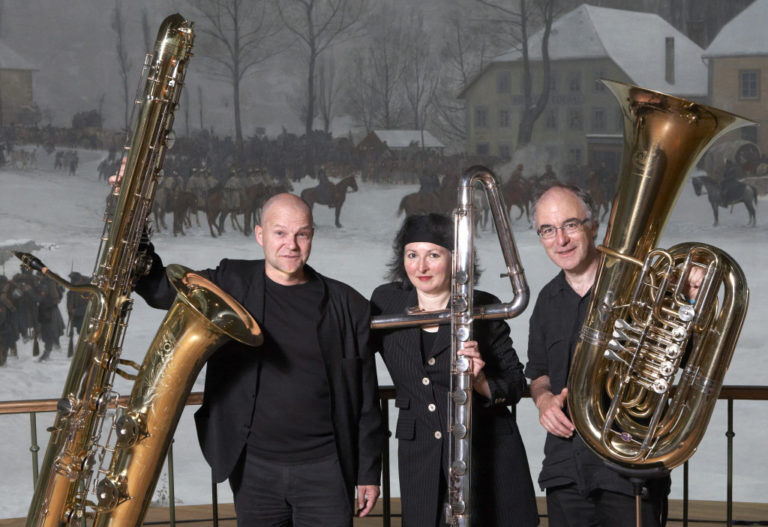Mix your version of the "Swan's Down":



Play almost simultaneously (or slightly behind) the tuba and flute tracks.
About 1 minute after introducing the tuba and flute, start the saxophone track. What happened as a result is a unique result of overlaying three sound parts. The next time it will not happen again, but some other will happen. This one is aleatoric counterpoint.

I wrote “Swan’s Down. Easterly lens” for the “KontraTrio” ensemble. They use the only lowest range instruments. We dedicated the project to the anniversary of “The Soldier’s Tale” by Igor Stravinsky.
I imagined the trio not as a joint ensemble, but as three solo parts that play out (flow, appear in three rivers) parallel to each other. That could have happened on the scale of an orchestra.
What happens in such a case? At the beginning, the separate voices can sync. Their connection obeys aleatoric rules. Each line has its specific harmonic and rhythm row, and their overlay is a momentary pattern. The sound result is like a melodic and harmonic kaleidoscope. Probability it will not occur at any next time.
It is not so essential the uniqueness of an unique overlay voices. The main interest here is the generative possibilities of each voice and the possibilities that they gives to sound “reliefs” that arose from the overlays of the three batches. For example, peculiar “cadences” are possible. When one voice lingers a little (the long note), and in the other two there is a brief “resolution” of intervals. Or rare random occurrences of moments of a general stop of movement. Or turning off (pausing) two instruments and selling a third sound material that was not planned. This potential (for several situations) is what we are talking about. The complete difference of reliefs is the form of these things.

The quotation from the “Soldier’s March” beginning is not the only thing connecting my piece to Stravinsky’s work.
Here, rather, the question of the style of musical material. Like Stravinsky’s suggestion in his “Tale” of such “low” everyday genres – tango, waltz, ragtime – here I used the most strange sound sources for me, acceptability, probabilities, from pop songs of the most varied quality (with their “caramel” melodies). and harmonic sequences from bard songs about love.

